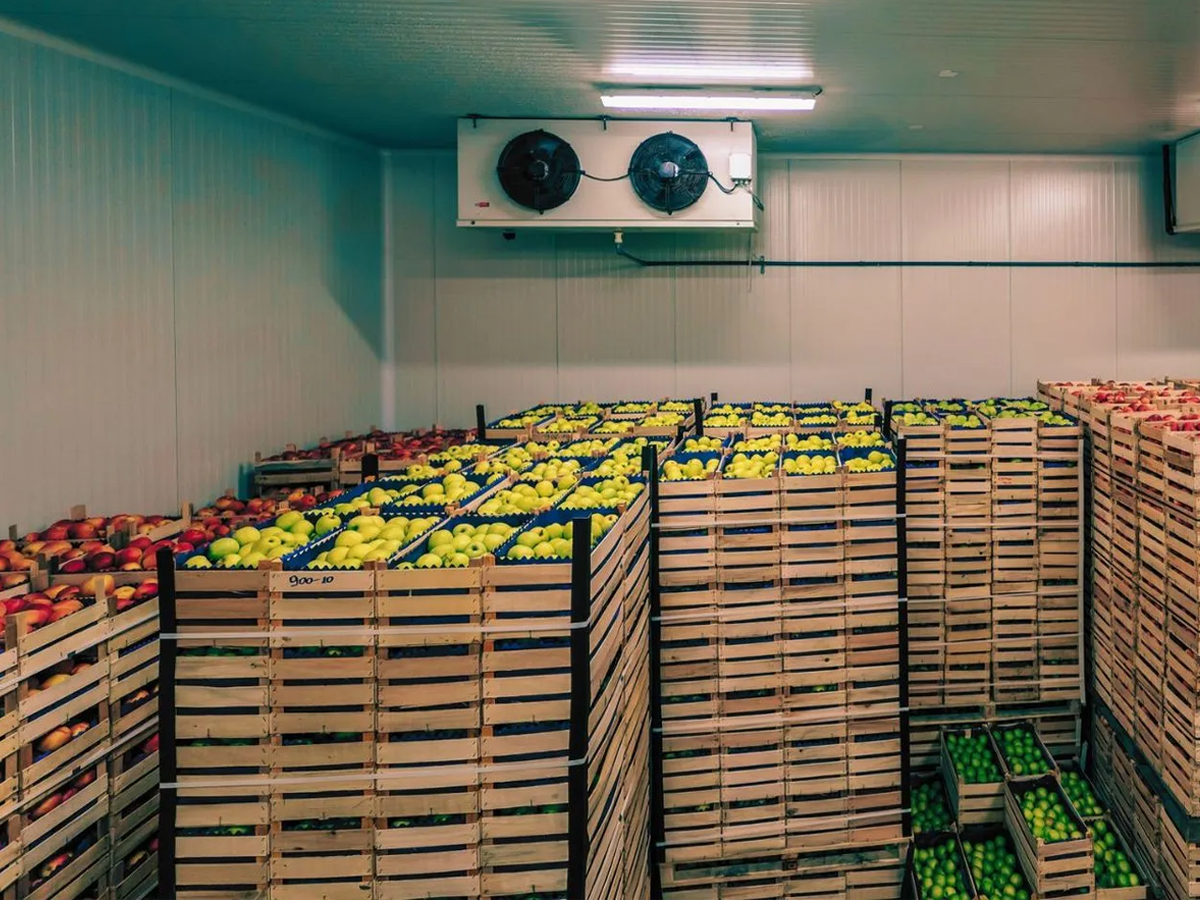Cold storage facilities must maintain specific conditions to ensure the safety, quality, and longevity of stored goods. These conditions vary depending on the type of products being stored, but generally include the following:
1. Temperature Control:
- Frozen Storage: It typically requires temperatures below 0°F (-18°C) to keep products frozen.
- Refrigerated Storage: Generally maintains temperatures between 32°F (0°C) and 50°F (10°C) to keep perishable items fresh.
- Specialized Storage: Some goods, like pharmaceuticals or specific foods, may require more precise temperature control within these ranges.
2. Humidity Control:
- Low Humidity: For frozen goods, low humidity helps prevent frost buildup and freezer burn.
- Moderate to High Humidity: For fresh produce or some food products, controlled humidity prevents dehydration and maintains freshness.
- Dehumidification Systems: It may be necessary to manage humidity levels effectively.
3. Airflow and Ventilation:
- Proper Air Circulation: Ensures even temperature distribution and prevents hotspots.
- Ventilation: Helps manage air quality and temperature consistency, especially in large storage areas.
4. Sanitation:
- Cleanliness: Regular cleaning is essential to prevent contamination and maintain hygiene.
- Pest Control: Measures must be in place to prevent infestations.
5. Safety and Compliance:
- Regulatory Standards: Adherence to industry regulations and standards for temperature and safety.
- Emergency Systems: Fire alarms, sprinkler systems, and emergency exits should be in working order.
6. Energy Efficiency:
- Efficient Cooling Systems: To reduce energy consumption and operational costs.
- Insulation: Proper insulation helps maintain internal temperatures and reduce energy use.
7. Monitoring and Alarming:
- Temperature and Humidity Sensors: Continuous monitoring to ensure conditions are within required ranges.
- Alarms: For immediate notification if conditions deviate from preset limits.
8. Access Control:
- Restricted Access: Limited to authorized personnel to ensure security and proper handling.
- Controlled Entry: To prevent temperature fluctuations from frequent opening and closing of doors.
9. Inventory Management:
- Proper Stock Rotation: To ensure older products are used or shipped before newer ones.
- Labeling: Clear labeling facilitates quick identification and reduces handling errors.
10. Backup Systems:
- Backup Power Supply: generators or uninterruptible power supplies (UPS) to maintain conditions during power outages.
- Redundant Cooling Systems: To prevent temperature increases if the primary system fails.
Maintaining these conditions ensures that cold storage facilities can effectively preserve the quality and safety of their stored goods, whether they are food, pharmaceuticals, or other temperature-sensitive products.

Leave a Reply